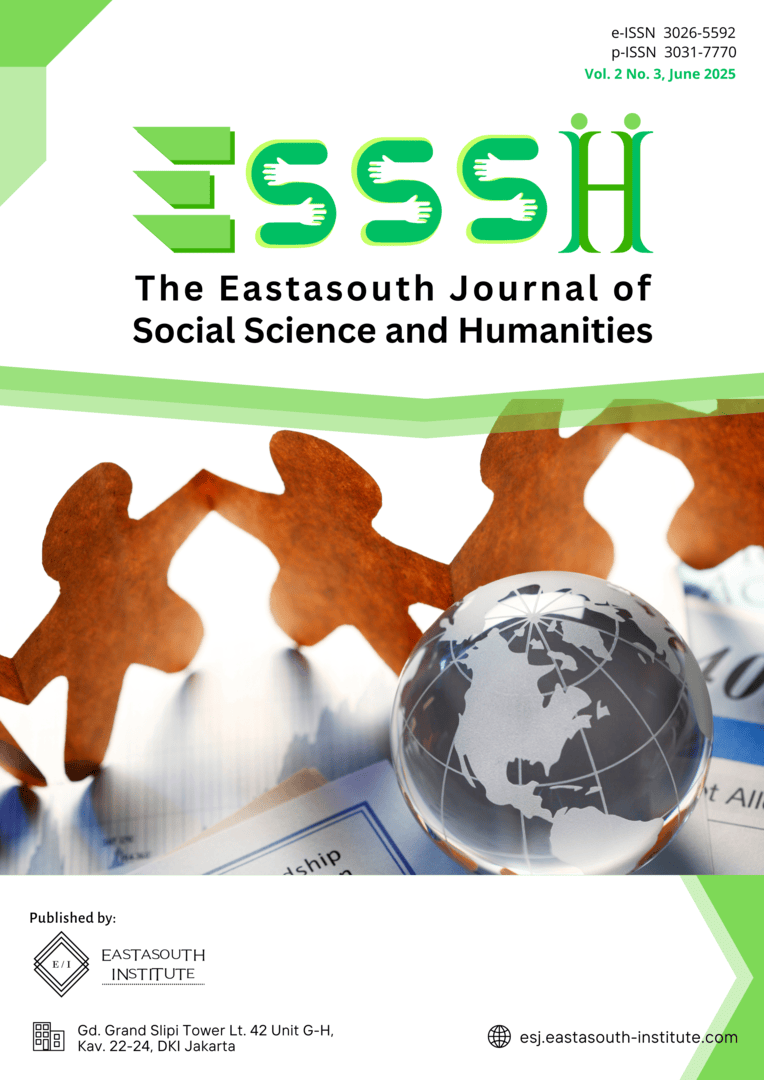Interpersonal Communication Attribution of Prisoner Companion (PRICO) Hygiene at the State Detention Center Class I Depok
Main Article Content
Abstract
The complexity of the problems that occur in Rumah Tahanan Negara (Rutan) Kelas I Depok, is one of the problems that continues. The relationship between officers and tahanan pendamping (tamping) that looks good, becomes a false picture with the discovery of communication devices in the prison cells, plans to smuggle narcotics into the prison environment, and conflicts in communication between prisoners and prisoners. The hidden motive behind the behavior and interpersonal communication that is well established between officers and companions, is an aspect that needs to be explored. This research, focuses on aspects of interpersonal communication and attribution in tamping. This research uses a post-positivisme paradigm with a descriptive qualitative method, which refers to the theory of interpersonal communication and attribution with the Coding Color Analysis Procedure (CCAP) analysis method. Data collection was carried out by means of observation, interviews and literature documents. The results of this research see a more intense interpersonal communication process between tamping and officers outside of duty hours with the context of the conversation more about personal life. Internal attribution of tamping different behavior, will be good with officers and will be conflict if with other prisoners. The tamping motive of getting benefits and convenience from closeness to officers is one of the causes of differences in internal attribution of tamping behavior.
Article Details

This work is licensed under a Creative Commons Attribution-ShareAlike 4.0 International License.
References
BNN, “Narapidana Narkotika Membeludak. Dimana Letak Permasalahannya?,” 2019, [Online]. Available: bnn.go.id
Z. Basan, I. Riyadi, M. T. Praharani, and K. Febrian, “Faktor penyebab narkoba dilingkungan lembaga pemasyarakatan,” J. Huk. dan Sos. Polit., vol. 1, no. 3, pp. 1–9, 2023.
D. K. Ono, R. Jayawinangun, and P. Handayani, “Aktivitas Tamping Kebersihan Sebagai Bentuk Komunikasi Asertif Dalam Pembinaan Warga Di Rutan Depok Kelas I,” J. Penelit. Sos. Ilmu Komun., vol. 6, no. 1, pp. 47–53, 2022.
A. M. Imaduddin Hamzah et al., Psikologi Penjara: Penerapan Psikologi dalam Proses Pemasyarakatan. Ainun media, 2020.
D. Arifani and M. Syafiq, “Menjadi Tahanan Pendamping Narapidana: Motivasi Dan Dampaknya Terhadap Perubahan Diri,” Character J. Penelit. Psikol., vol. 6, no. 3, 2019.
U. T. Suntani, R. N. Sasongko, M. Kristiawan, A. Walid, and R. G. T. Kusumah, “The Role of Principal Interpersonal Communication on Teacher’s Work Motivation.,” Educ. Q. Rev., vol. 4, no. 2, pp. 147–151, 2021.
D. A. Joseph, Komunikasi Antarmanusia. KARISMA Publishing Group, 2018.
J. Rakhmat, “Psikologi Komunikasi (Revisi ed.),” Bandung, Indones. PT. Remaja Rosdakarya, 2018.
S. Sarwono, Teori-Teori Psikologi Sosial. PT. RajaGrafindo Persada., 2019.
S. A. N. Hasanah, D. Agustina, O. Ningsih, and I. Nopriyanti, “Teori Tentang Persepsi dan Teori Atribusi Kelley,” CiDEA J., vol. 3, no. 1, pp. 44–54, 2024.
F. R. C. Usman, “Communication Attribution And Self-Disclosure In Family Communication”.
K. Grasser, Sensemaking and crisis communication: How school leaders communicate in times of crisis. The George Washington University, 2022.
K. G. Nixon, Arizona Chief Fire Officers’ Opinions Regarding Firefighter Behavioral Health Problems: Causes and Help Approaches. Northern Arizona University, 2021.
L. J. Moleong, Metodologi penelitian kualitatif, Edisi revi. Bandung: PT Remaja Rosdakarya, 2018.
L. A. Saksono, B. Bungin, and D. Bernardus, “The Exploration Study of Entrepreneurial Leadership as Strategic Asset in Ciputra Group,” Binus Bus. Rev., vol. 16, no. 1, pp. 1–11, 2025.
A. I. Pratiwi, A. Muhammad, and C. E. Tando, “Pola Komunikasi Antara Petugas Rutan Kelas IIb Pandeglang Dengan Warga Binaan Pemasyarakatan (WBP),” J. Pendidik. dan Konseling, vol. 4, no. 6, pp. 2788–2794, 2022.
S. G. Mahdiyah and V. P. Y. Semendawai, “Elokuensi Dalam Ekspresi: Menjelajahi Kekuatan Komunikasi Efektif Dalam Menumbuhkan Hubungan Yang Berarti Dalam Kehidupan Personal Dan Profesional,” J. Transform. Mandalika, e-ISSN 2745-5882, p-ISSN 2962-2956, vol. 4, no. 5, pp. 217–229, 2023.
R. Rismayanti, “Hambatan Komunikasi Yang Sering Dihadapi Dalam Sebuah Organisasi,” J. Ilm. Al-Hadi; Vol 4 No 1 Januari 2018DO - 10.54248/alhadi.v4i1.384 , Nov. 2018, [Online]. Available: https://jurnal.pancabudi.ac.id/index.php/alhadi/article/view/384
Phatriakalista Intan Apsari, I. S. Putri, J. Abdillah, A. M. Zain, and N. A. Firmansyah, “Analisis Budaya Dan Etika Bisnis Dalam Pembentukan Manajemen Kinerja Karyawan,” J. Alwatzikhoebillah Kaji. Islam. Pendidikan, Ekon. Hum., vol. 8, no. 1, pp. 32–40, 2022, doi: 10.37567/alwatzikhoebillah.v8i1.969.
J. G. Oetzel, K. A. Foss, and S. W. Littlejohn, “Theories of human communication.” USA: Waveland Press, 2017.

